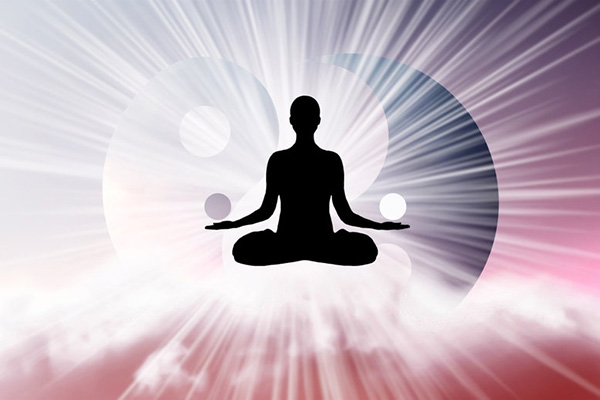law of attraction
Ritual In A Modern Spiritual Lifestyle
 Rituals, rites and ceremonies are the oldest forms of spiritual practice and essential aspects of all religions and belief systems. A ritual is a meaningful or symbolic action or series of actions that has a standardized format or sequence and can therefore be repeated in exactly the same way by individuals, groups or even communities.
Rituals, rites and ceremonies are the oldest forms of spiritual practice and essential aspects of all religions and belief systems. A ritual is a meaningful or symbolic action or series of actions that has a standardized format or sequence and can therefore be repeated in exactly the same way by individuals, groups or even communities.
The metaphysical energy generated when we focus our intent using symbols, tokens and metaphoric activities during a ritual that has special meaning for us personally can be highly transformative! Whether you practice ritual in a group or solo, it can supercharge your manifesting ability and aid in any mental, physical, emotional, and spiritual healing processes you may be going through.
When some people hear the word ‘ritual,’ they tend to imagine darkened, smoke-filled rooms with mysterious people in long robes, chanting strange refrains perhaps, all choreographed with everyone knowing their roles. I’m sure there are people who practice rituals in this way and elements like incense and chanting can indeed be party of a rite or ceremony. But a ritual can also be more simply crafted in a way to fit into a modern lifestyle and everyday spiritual practice.
In my own practice, I created a little ‘altar’ for myself. A small sacred space where I have placed a few candles, some incense, crystals, feathers and a few other symbolic tokens which hold special meaning for me. I also added a picture of my mother and a statue of an angel given to me when my grandpa passed away. In this way I created a sacred space that has deep meaning for me personally and brings me into a spiritual mindset.
You don’t need to have a lot of room for this in your home. So, you can even create a small sacred space for yourself on the corner of a dresser or table top. As my practice has evolved, I now find that any spare surface or quiet corner in the places where I have lived can become a nook for little spiritual treasures that I find during my adventures. Once you start creating a sacred space, the Universe will send you little gifts to help you along.
Stay True To Your Own Best Karma
 You may have heard of someone ‘getting their karma’ for something bad they have done, or of wishing bad karma on another for their transgressions. Most people use the word ‘karma’ in this negative sense, usually believing that a person that hurt them will be on the receiving end of the same hurt (or worse) because of their deeds.
You may have heard of someone ‘getting their karma’ for something bad they have done, or of wishing bad karma on another for their transgressions. Most people use the word ‘karma’ in this negative sense, usually believing that a person that hurt them will be on the receiving end of the same hurt (or worse) because of their deeds.
But wishing negative karma on another is a dangerous practice. What we think, say and do tend to come back to us, instead of another person. So, when you say something like, “Oh, I can’t wait until they get their karma and someone breaks their heart like they broke mine,” you have in fact declared it for yourself (again).
Karma happens when it happens. Never, ever wish it on another in a negative manner. Your thoughts, words and actions determine what you attract to yourself.
Karma can instead be invoked in an amazingly positive way. Wish everyone good things, positive actions, and uplifting results in their life – even those who wronged you.
Congratulate that person who got the promotion that you wanted. Offer the person who stole from you a blessing. Forgive the person who broke your heart and wish them only happiness in their future life.
This will open the flood gates of good reactions to your actions. There is a cause and effect for everything, so the moment you choose to you’re your thoughts, words and actions all positive and loving, that is what you will attract in return.
How To Set Intentions That Manifest
 Not long ago, I was going through some storage boxes and out fell a little scrap of paper. Curious, I picked it up, unfolded it and read the words I had written over a year earlier.
Not long ago, I was going through some storage boxes and out fell a little scrap of paper. Curious, I picked it up, unfolded it and read the words I had written over a year earlier.
Now, I do not remember writing this little note, or saving it for that matter. But what I found grabbed my attention and pulled me immediately into the present moment.
It was a wish list. I had written things like, “do fulfilling work that feeds my soul,” and “a home with by the ocean, mountains and forest.” As I read through the items on this list, I realized that all of them had meanwhile become a reality in my life. I was amazed, and filled with gratitude!
Like most people, I also too often forget to take stock and honor moments of gratitude for the many blessings in my life.
While this wish list shook me back into gratitude, it also got me thinking about something else. The power of intention.
I always say that life is like driving – you need to look where you want your car to go. With the general busy-ness of life getting in the way, it can be challenging to stay focused on where we want to be versus where we are now.
I have found the following three strategies help to bring me back into full presence and awareness in the current moment, as well as setting intentions like a ‘map’ of where I want to be headed.
Envision The Broad Strokes
It is vital to understand that universal energies seek to help us manifest that which is our highest and best good. With this concept as our framework, we allow these energies to work within our lives in ways we may never have expected.
A Hopeful Spring Of New Beginnings
 Spring is around the corner here in the Northern Hemisphere. Not only is the snow melting gradually, but Covid-19 is also slowly subsiding. Restaurants, gyms and theatres have finally reopened at full capacity, and it won’t be long now before mask mandates are at least partially lifted.
Spring is around the corner here in the Northern Hemisphere. Not only is the snow melting gradually, but Covid-19 is also slowly subsiding. Restaurants, gyms and theatres have finally reopened at full capacity, and it won’t be long now before mask mandates are at least partially lifted.
After two years of being ultra-cautious in one of the hardest hit pandemic hot-spots in Canada, this Spring will truly feel like a re-awakening into a brand new world for me!
It’s impossible not to feel a sense of joy and gratitude every year, as the days get longer and the weather loses its frigid edge, but this year’s season of reawakening seems especially blessed and hopeful.
However, against the backdrop of the horrors of war, adversity, and suffering experienced by people in other parts of the world, one must be particularly grateful. We are privileged to live in a place where we are safe, healthy, and comfortable.
Instead of complaining about trivial things, we must look around and count our blessings in our cozy corner of the world. We should choose to be happy for what we have, and appreciate the good things in our lives, no matter how small or simple they may seem.
Now is also an opportune time to regroup and reset our personal priorities, goals, and aspirations. For the first time in a long time we can now confidently begin to visualize our ideal future and take ambitious steps in the right direction. The Universe can only put it all together for us, once we set a clear intention for it.
It’s important to remember that visions boards, affirmations, prayer or visualizing are powerful tools in the manifesting process, but it takes a little more than to do the trick. We must also take some concrete steps and make some practical inroads, so that the Universe can conspire on our behalf to facilitate our success. Even the smallest of efforts will set things in motion.
The Key To Finding True Love
 How do I find true, long-lasting love? This is a question I get in many readings, almost every day. True love is indeed a very special, rare miracle. Most people try to find it, but many fail.
How do I find true, long-lasting love? This is a question I get in many readings, almost every day. True love is indeed a very special, rare miracle. Most people try to find it, but many fail.
I believe the solution is already within all of us, we just need to look inside to find it. Yes, the answer to finding true love is already inside you!
What you need to consider carefully is how much do you love yourself? If the answer is ‘not so much’ or ‘not enough,’ then you need to ask yourself why?
You see, many people do not love themselves enough to feel they actually deserve love. And if we do not believe we deserve love, then we will also not find it. We can only manifest in our life what we resonate with.
Believing that you deserve love simply begins with loving yourself first. When we finally put out of our mind all the self-doubt and lack of self-worth, it changes our mind set to believing we deserve to be happy and to be wholeheartedly loved by others. Then we can move forward by becoming an energy frequency match to finally attracting that someone special.
It all starts is with you. Anyone can achieve and find love, but unconditional self-love is the only viable beginning of that journey. Without self-love and self-acceptance, not other love can survive, much less succeed.
An important byproduct of authentic self-love is that it clarifies your actual wants and needs, and your personal strengths and shortcomings. These are important to know for yourself, as it sets the scene for all your other relationships. Is the person I am dating right for me? You will not know that if you do not know yourself.
The Divine Magic Of Manifesting
 We cannot always control our environment, but we can be an active force in how things play out in our own lives. Through our actions and choices we impact our personal universe, even without any occult practice.
We cannot always control our environment, but we can be an active force in how things play out in our own lives. Through our actions and choices we impact our personal universe, even without any occult practice.
However, this changes once we become aware of our metaphysical ability to manifest, and we realize we have already been doing it our entire life as spiritual beings in human form. And once we become aware of our innate power to manifest we simply need to improve it and have a deeper conversation with the many layers of reality.
Our minds and, in particular, our expectations already influence the world around us. We do this unconsciously every day, and without direction. Sometimes we let our fears run wild and then we create dark mirages that end up taking shape in our material world. Yes, indeed, these are mishaps of our own creation.
We all want to guide, foresee, and control life, but for some of us this possibility has always eluded us. There seems to be too many variables and our judgments appear to lack the clout required to guide even our own most basic wants. Maybe reality is simply too complicated? Perhaps we just need more resolve? Or maybe ‘magic’ may teach us something about that.
The magic of manifesting is a technique or method, as well as a spiritual path. It is a tool for self-discovery, since it rearranges our perceptions of reality and it is a path because it leads us to personal revelations and inner realizations. Furthermore, it assists us in seeing how malleable our life really is, which is unquestionably the first step toward personal transformation.
Magic as an occult tradition has a bad reputation. It may appear that anything related to so-called magic is supposed to be dark and dangerous, even evil, but this is not the case at all. Instead, the magic of manifesting brings our true desires into reality. It is a continuous process that teaches us a lot about our minds. We actually become more aware of our most difficult personal aspects by engaging with the things we desire. In the pursuit of magic we often discover how we are sometimes our own worst enemy.
Belief Is The Key To Manifesting
 Is there something you want to happen, or something you desire, want or need? Put it out to the Universe as a request for what you want to happen in your life. But the key is to believe. If you do not believe it can happen for you, it most likely will not happen…because you are standing in the way of it happening.
Is there something you want to happen, or something you desire, want or need? Put it out to the Universe as a request for what you want to happen in your life. But the key is to believe. If you do not believe it can happen for you, it most likely will not happen…because you are standing in the way of it happening.
Many people sabotage their own manifesting process because they do not believe they deserve to be happy. I have seen this happen so many times. But everyone deserves to be happy.
Things can change in your life. You just need to set the intention, take some practical steps to make it happen, and most of all trust the process and believe.
When you are in alignment with the abundance of the Universe and you trust that it will provide for you always, then it all starts to fall into place. Manifesting begins and ends with believing in the laws of the Universe.
For manifesting to truly work one must have the sincere, unquestioning faith of a child. Young children have the uncanny ability to wholeheartedly believe even the most impossible things!
If we had just a little more of the open-minded belief of children, our lives would be so much happier and more fulfilled. It is not about being naïve, but about being open and accepting.
If we do not trust the Universe to provide for us, we tend to repeat the same mistakes time and again. Instead of setting a clear intention for what they want to be different or better in their life, many people we just keep on manifesting the same old energy repeatedly.
For example, they break up with someone who they felt was not right for them, but then they start dating someone else who is exactly the same. They continue in the same pattern and repeat the cycle of continuous heartbreak, over and over – instead of saying I want to be with someone who treats me better, and work towards that.